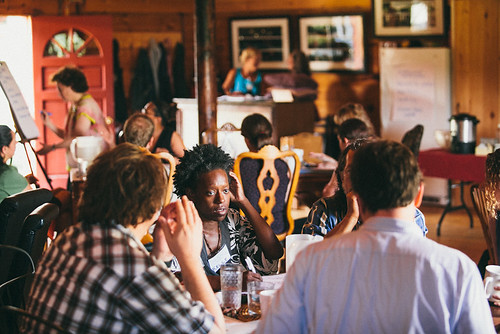
This past week, I had the opportunity to join a group of rural arts leaders at a conference in the Pioneer Valley of western Massachusetts. The event had a number of objectives, including some hearty brainstorming about the crucial role rural arts organizations and artists play in buoying small town economies and enhancing the livability of rural places. Additionally, since there were a number of talented and inspiring young people in the group, this was a chance for them to learn and share their experiences. While there was no USDA sponsorship of this event, the Obama Administration can certainly feel inspired by the positive energy these practitioners bring to the country.
The group held conversations at the Double Edge Theater, training and performance center (it’s really a farm where really cool people do really cool acrobatic theater) in Ashfield, Mass.
Double Edge is a superb example of how an arts organization plays a vital economic role in a rural area. Their 11 full-time artisan employees live in the area and contribute to the economic and social vibrance of western Massachusetts. We were fortunate to see Double Edge’s summer performance--I say fortunate, because all of their shows are sold-out. It was an inspiring performance, and I gained tremendous admiration for the performers (more aptly described as cultural athletes) who have chosen rural America to practice and share their craft.
The participants included people from across the country representing a variety of cultural organizations and sector perspectives.

The meeting was organized by the hard-working team at Center for Rural Strategies which remains one of Rural America’s strongest voices. Matthew Fluharty, a PhD student at Washington University in St Louis brought social networking content to the table via Art of the Rural blog. As part of USDA’s collaborative effort with the Council on Foundations to encourage greater philanthropic investment in rural America, it is heartening to see support from non-government funders that help build human capacity in rural places.
One final thought: Rural communities that find a way to attract and/or retain creative people and organizations are going to have an easier time charting a viable future in the global economy. In the years ahead, USDA will hopefully find ways to support the entrepreneurs that make up the rural creative class.
